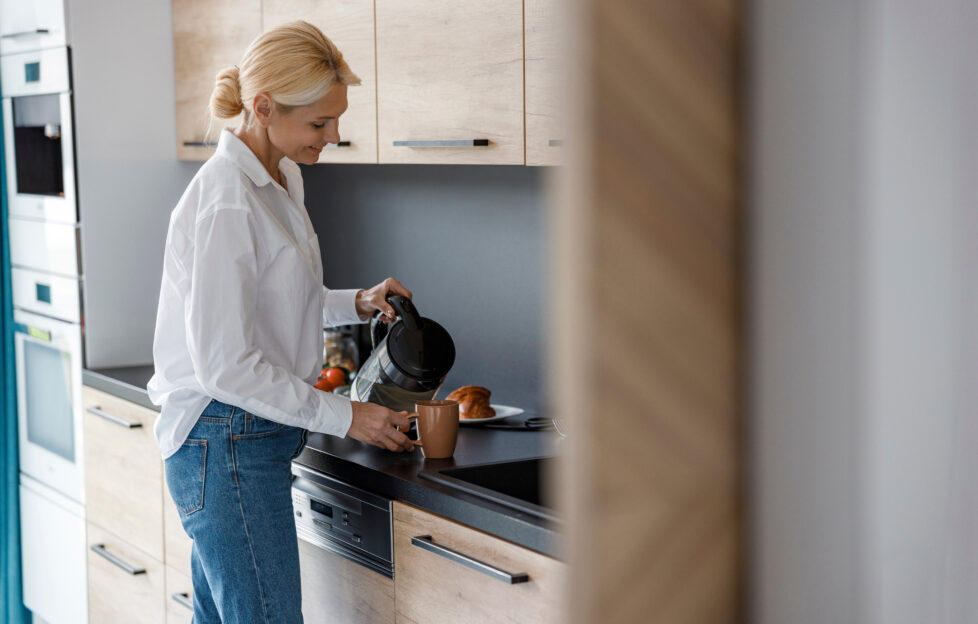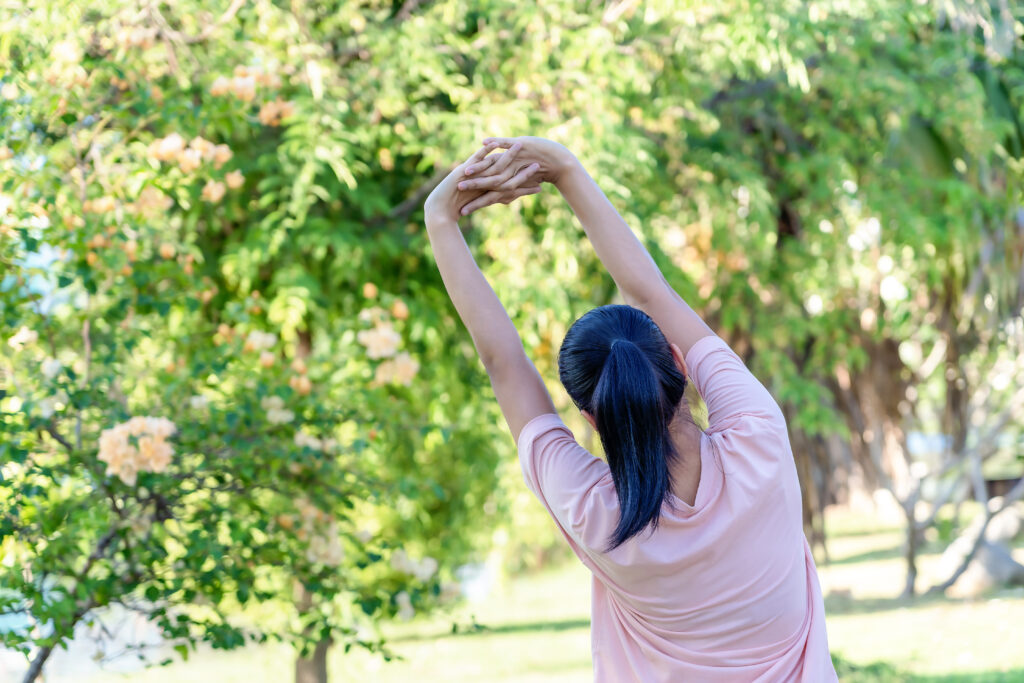5 Stress-busting Exercises You Can Do While The Kettle Boils

Russell Hobbs, a leading UK household brand have partnered with the nation’s favourite tea brand, PG tips, in a campaign to spread ‘Positivi-tea’ across the nation with 5 stress busting tips you can do in just a few minutes. After a tough 18 months for so many of us, we are now starting to return to normality and happier times, and the two brands are doing their bit to help out where they can.
Brits drink countless cups of tea and coffee per day, so why not use the precious time you are waiting for the kettle to boil to regulate stress levels and increase your mental wellbeing?
Tip 1: Cardiac Coherence breathing / Heartbeat breath
Make yourself comfortable and locate your pulse to listen to your heartbeat or watch a clock with a second hand – inhale for a count of 5 beats or seconds and exhale for a count of 5 beats or seconds – do this for as long as you can – recommended is for 5 minutes – there are audio guides available on YouTube to assist you.
Benefits:
This breathing balances the sympathetic and parasympathetic nervous systems, which regulates hormone levels, eases fear, stress and tension as well as bringing us back into the present moment – making us mentally clearer.
Tip 2: Spine mobility
Move your spine gently in every direction – arms together over the head, tick tock arms from side to side, hands on your lower back, look up and backwards as far as possible using your hands as support, bend your knees, hinge from the hips and allow your torso to dangle forward over your legs which can try to straighten. Let the crown of the head extend down towards the ground allowing yourself to nod and shake your head slowly and gently to release neck. Slowly come back to standing by rolling up the spine from the lower back – with slightly bent knees, gradually pivot the torso from side to side letting your arms be loose and swing – twisting the spine gently and increasing the range if the body allows.
Benefits:
Restoring and maintaining the range of motion in and around the spine aids digestion, increases energy levels and prevents back pain. Without using our natural range of motion, muscles, tendons, ligaments, and fascia (connective tissue) will gradually shorten and become stiff over time, increasing the risk of joints and vertebrae hardening and fusing. Limited mobility of the spine can affect the hips, abdomen, and rib cage also. Healthy spine, healthy life!
Tip 3: Sighing – reset your system
Stand or sit with your back comfortably straight – feel free to wiggle around a bit to get there, move the spine, stretch the neck, roll the shoulder out etc. Once you can settle comfortably – adopt a non-judgemental attitude, maybe close your eyes and place one hand on your lower belly. Take a slow deep breath in through the nose and try to encourage the breath to move deep into the lower belly – notice if you can make your hand move. When you feel you cannot inhale anymore, allow your mouth to open and sigh the breath out – make whatever noise you like. Do this at least three times and notice what happens.
Benefits:
Sighing helps to regulate stress and offers a biological reset by encouraging the breath deeper into the body which has a calming effect as well as contributing to improved lung health.
Tip 4: Shake it out
Stand with feet hips width apart, bend the knees a little bit, start to bounce the body allowing everything to shake, feel free to extend and exaggerate the shake to the arms and hands, shift weight to one foot and shake one leg at a time, you can even get the hips and chest involved. Allow the movement to be as gentle or energetic as you feel is right. Do this for at least a minute, noticing the effects on the body as you settle back into stillness. There are videos you can look up for inspiration such as ‘Qigong shaking’.
Benefits:
Shaking discharges stress and balances the nervous system. When we experience tension and trauma; our brain and bodies activate our defence strategies, making us tight, contracted and prepared for fight-or-flight or freeze. By shaking out the tension we dispel the stress from the body. More in-depth exercises for people who have experienced trauma are available such as TRE (Trauma Release Exercises)
Tip 5: Gratitude Practice
Place a hand on your heart space or draw your attention to your chest area, take a few deep breaths and allow your thoughts to settle. List five things that happened in the last 24 hours that you are grateful for – they can be small, simple things or larger, complex things. Think about your own personal qualities, your environment and the people you interact with. Think about those things in detail – how do they make you feel? What makes you grateful for them? Can you express that gratitude in some way? Try to do this practice most days and feel free to keep a journal of your grateful thoughts.
Benefits:
A regular gratitude practice has emotional and interpersonal benefits as well as an increase in well-being by stimulating two regions in our brains: one which regulates stress and the other which plays a significant role in producing feelings of pleasure.
Yoga teacher and therapist, Cassie Sibbin, commented on the mindfulness exercises and their benefits on our mental wellbeing: “These quick and easy-to-follow mindfulness exercises can help relieve your stress and ease tension, whilst waiting for the kettle to boil. Exploring these exercises will not only stimulate your mind, but it will help improve physical health in a number of ways. You may go from a negative mindset of feeling tired, stressed and anxious to a positive one with feelings of strength and capability that you can take forward into your day.”








